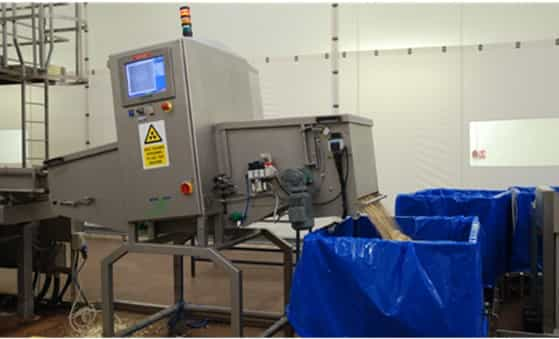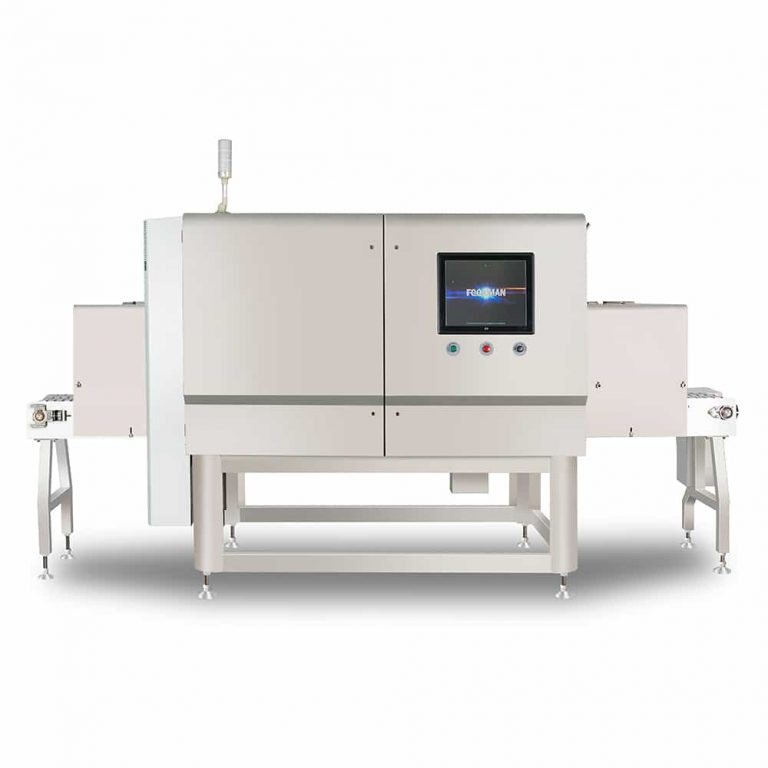
As a food processor, you understand that x-ray machines play a pivotal role in the fight against food contaminants in the food production line. X-ray inspection systems help safeguard your brand identity and protect customers from food hazards.
Choosing the right food x-ray inspection system guarantees the success of your inspection program as you fulfill governmental regulations and consumer expectations. Therefore, it would help to know the most suitable x-ray machine model for your operations and the ideal spot to place it in your production line.
This article will take you through how to evaluate and choose between different types of x-ray inspection systems. You’ll also learn the most suitable position to insert the x-ray inspection system within the processing line. Let’s dive in!
6 Principles to Evaluate and Choose the Right X-Ray Inspection System
X-ray machines have similar functions. However, notable differences in their respective performances could determine food safety. Whenever you want to choose an x-ray machine for food inspection, here are fundamental principles to consider to ensure the x-ray system can meet your food safety objectives:
Application Compatibility
When choosing an x-ray machine, you must consider the product that needs inspection, the packaging type, and the size.

An x-ray inspection system should make it easy and possible for food producers to fulfill all compulsory food safety standards. The government will inspect and confirm that manufacturers meet these compliance requirements. However, you must consider the critical control point you want to put the x-ray machine to determine the size and capacity of the device.
Flexibility and Integration
An x-ray machine with great flexibility allows for an efficient food inspection in the production line. Although some machines are flexible and easily integrated, others are not. Some x-ray machines work together with other equipment, while others must stand alone. However, examine an x-ray system to know if it has software that allows it to provide periodic data reports for statistical packages and working Ethernet.
Most x-ray inspections installed at the initial point of production inspect the raw material and bulk-flow products before processing or packaging operations. At the same time, those used at the terminal points scan packaged products before sending them to consumers.
Safety and Hygiene
Choose an x-ray machine that safeguards the brand, employees, and consumers as it performs different functions. Ensure that its radiation dose is safe, designed to be safe for use, and has data security. Likewise, x-ray systems must allow food traceability. It should safeguard data processed such that it can be quickly referenced.
The efficient defection of contaminants in processed food promotes hygiene and protects the product from recalls. In addition, it should possess a hygienic design that makes it easy to maintain, clean, and resistant to wear. Like every other piece of equipment involved in food processing, it should reduce the risk of cross-contamination in food.
Data Storage and System Update/Efficiency
A food x-ray inspection system that saves a large volume of data offers quality assurance as it identifies trends, improves the overall traceability of errors, and provides preventive measures. The latest inspection systems offer seven-step image analysis technology. It detects foreign objects with high sensitivity and inspects products accurately.
The x-ray system should be able to increase output, prevent food wastage, and avoid risks of recall. Quality inspection equipment should allow the user to make one or more algorithms that help to optimize the detection of contaminants. As a result, the machine must function efficiently at an effective rate while preventing unplanned downtime. Its improved inspection and decreasing operation costs make it more attractive to food producers.
Operation

The operation of an x-ray machine must be simple and intuitive. It helps to reduce the risk of human error as it operates. The first setup of a newly installed x-ray inspection system is often tricky. It is advisable to let an expert handle the first installation and configuration.
Once it is ready for use, the machine should possess an electronic control that is easy to use by anyone. The scanner should have seamless navigation and functionality that helps to avoid errors and reduce time. This improves the overall operational capacity of the system.
Service and Warranty
The x-ray system manufacturer should offer comprehensive service and support to ensure the lasting performance of the equipment. Continuous service from the x-ray manufacturer throughout the machine’s lifecycle is essential to ensure excellent performance.
These comprehensive services include:
- Validation assistance before purchase
- First installation and device calibration
Food processors depend on x-ray machines to safeguard their consumers and brands. Nevertheless, choosing the right food inspection system is crucial to guarantee the success of an inspection program. Here are the common types of x-ray systems for your production line:

Vertical beam machines are the standard type of x-ray system suitable for detecting food contaminants. They effectively detect foreign objects through the common vertical cross sections where the packed products have the tiniest depth. It offers the best sensitivity because most packed products are often smaller in depth, length, and width.
The x-ray scanner has a conveyor that moves packs from the producer’s line through the x-ray beam and back to the line. Like all x-ray machines, you can integrate an automatic reject system to remove faulty packs from the production line efficiently. The x-ray generator is often positioned at the top of the cabinet, allowing its beam to shoot downwards through the packed food before striking the detector.
Each pack must fit into the triangular-shaped vertical beam to ensure the inspection of the whole product. As a result, you should guide and position the packs at the center of the belt. The largest depth and width of the packs processed for inspection determine the size of the x-ray beam.

This type of x-ray inspection system is programmed for quality assurance in food products like nuts and cereals. The typical applications involve the inspections of bulk-flow food products to ensure quality before further processing or distribution.
You should consider the location of the bulk x-ray machine on your production line. The sensitivity detection level in bulk-flow products is often best before they are packed into the final product. These inspection systems help inspect raw materials and other incoming goods at the initial stages.
The aim is to form a homogenous layer of product 25 mm deep or less because it helps detect contaminants easily in bulk-flow food. It enables the immediate removal of contaminants and helps to trace them back to the supplier.
X-Ray Inspection System for Canned, Jarred, and Bottled Products
Angled or multiple-beam x-ray inspection systems are the best options for inspecting canned, jarred, or bottled products. They can optimize the detection of contaminants in the neck, sidewall, and base of the jar or glass bottle by reducing potential blind spots. The common options include:

The single-beam x-ray is not only valuable for glass and metal detection; it also detects faulty products and incomplete packages. These are standard options in the food industry because their dynamic design makes them suitable for all vertical applications or inspections.
They have a high accuracy which helps them to detect metal balls less than 0.4 mm. In addition, they offer quality traceability and are easy to operate.

This type uses two independent generators to form angled x-ray beams pointed at two detectors. It improves the chance of detecting foreign objects in products like glass jars. You can quickly inspect a larger area of a glass jar’s crown and spot foreign objects on the side wall.

The x-ray machine creates images that show the view through the jar from two distinct angles. When a foreign object surfaces on the side wall in one image, it moves from the side walls to the container’s body in the second image, making it easier to see.
Dual-beam x-ray systems don’t guarantee 100% product inspection of high-absorption packaging like glass jars. As a result, using both vertical and horizontal beams in your production line would be helpful. Their different beam angles allow enough pitching (product spacing) to ensure the independent and practical inspection of each product.
Which X-Ray Inspection Rejector Is Suitable for X-Ray Inspection Systems?
There are various kinds of rejector systems available for x-ray machines. However, your choice of a suitable rejector depends on factors such as belt speed, package size and weight, and type of environment.

The popular available options are:
Air Blast
The air blast rejector system is suitable for packs that weigh up to 850g. It inspects small packs moving at high speeds on the small and narrow belt systems. It allows the line to run continuously without disruptions while the nozzle air blasts all rejected packages.
It is an ideal reject system for small to medium-sized packaged products produced in line with proximity. Examples include bags of potato chips, granola bars, etc. However, the air blast rejector is not ideal for open or breakable packages that could shatter or spill over the production line.
You can optimize its settings using a controlled variable air-flow reject valve. The rejector ‘delay’ time is when a contaminated pack is detected, and the air blows it from the production line. Likewise, the reject ‘duration time’ is the period the air blast blows continuously.
Pusher
The pusher rejector system is ideal for rigid packaging products that are typically heavy and wrapped. It consists of a mounted pusher blade that pushes all detected contaminated products off the conveyor belt and into the reject bin. Depending on the products being processed, the pusher usually comes from the side or overhead.
The pusher rejector is not a suitable choice for poly-bagged products. As a result, you need a rejector brush strip attached to the machine to avoid getting the bags trapped under the pusher blade. 10kg is the maximum weight capacity for either side or overhead pushers. However, there is a heavy-duty pusher that pushes up to 50kg and offers a 15ppm of max pack rate.
32/64 Lanes Air Blast for Bulk Goods
Multiple rejectors often guarantee positive rejections. The 32/64 air blast rejector is a typical example of a bulk-flow rejector. This system has no individual lanes; the x-ray continuously takes images across the belt width. Their nozzles are directed at an angle towards the falls of the product. The machine blows air that blasts contaminated packs backward, out of the torrent, and into a container.
Which Position in the Production Line is Best for Checking?
X-ray inspection systems offer a versatile function along the production line. As a result, industries may decide to position their x-ray inspection system at one or more critical control points along the production line where they get the most benefits.
These include:
- Inspection of loose or bulk-flow products
- Inspection of raw ingredients
- Inspection of pumped products
- Inspection before and during the processing of products
- Inspection after product processing
- Inspection before packaging and sealing
- Inspection after packaging and sealing
- Inspection of final closed products
Although x-ray inspection is highly efficient at each of these positions in the production line, deciding where to place the x-ray equipment in the production line depends on the food processor. You must decide which of the above-listed positions would offer the best results and serve your business more effectively. The chosen position must also prevent every possible risk and save unplanned costs.
Conclusion
An efficient food x-ray inspection system helps to detect food contaminants, ensure consumer safety, maintain a positive business reputation, and lower business costs. Choosing the right one for your business offers you an efficient inspection in your food processing stages. As a result, you will enjoy thorough, fast, and reliable screening processes across various food production stages. Consider the factors discussed in this article to choose the best x-ray food inspection system for your business.





